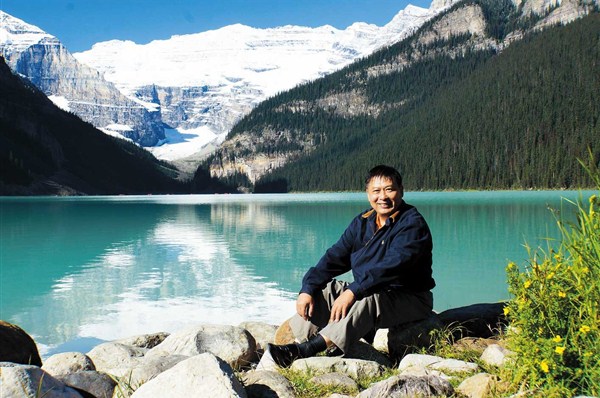今日上海
华裔艺术家延续传统象牙雕刻技艺 - 2016年12月02日
Master ivory carver looks back at dying tradition

IVORY carving is surrounded in controversy. On one hand, the ivory trade has decimated elephant populations around the world. On the other hand though, skilled artisans have turned ivory into exquisite works for thousands of years.
But now that the ivory trade is globally banned, what about the future of this ancient art?
Charles C. Min Hu, a Shanghai-born Canadian, has spent the last two decades considering this question. He collected his thoughts and knowledge on the subject into a recently published book, “A History in Ivory Carving in Shanghai.” The book offers both a window into the past of ivory carving, as well as a glimpse of its future.
“Protecting elephants is very important, and I have nothing against the ivory-trade ban,” says Hu. “But the skills and the artistry that Chinese people, especially Shanghai people, have developed over centuries in ivory carving is also precious, so we will find new materials and pass on the skills.”
Hu himself was once a successful ivory carver. In the 1970s, he graduated from the Shanghai Arts and Crafts College. He was then assigned to the ivory workshop at the Shanghai Jade Carving Factory.
Because of his talent and hard work, Hu was sent by the factory to Beijing for further studies. There he became an apprentice of master carvers Yang Shihui and Ding Yuting. After he came back to Shanghai, he soon became the director of his workshop.
“But I still felt this not enough career development, and I wanted to learn more,” Hu says. “That’s why I went to Canada in 1988, to try to absorb Western art styles and skills to improve my works. And Canadian jade carving was a gold mine of knowledge.”
Less than a year after he went abroad, a global ban was placed on the ivory trade. For Hu, this meant the loss of his artistic medium. He switched to jade carving as he pondered his future.
Very soon, his talent showed itself again and he became director of a Vancouver jade workshop. In the meantime, he started looking for a substitute to ivory to move the art forward.
“Shanghai ivory carving has its specialties,” says Hu. “In ancient times, the local art pieces were more delicate than those created in northern China, even though northern China had the best royal artists. I think this was because Shanghai was always a place that attracted culture from all over the country, as well as all over the world.”
One of the better substitutes Hu found was fossilized mammoth ivory. This material was long used by aborigines in North America, but they only used it to make small accessories.
Although the texture of mammoth ivory is not as smooth as ivory, after processing Hu says it makes an excellent carving material.
Hu’s mammoth ivory fossil works received a positive response when exhibited in Vancouver.
They soon became sought after by collectors. His jade carvings, especially those depicting animals, also received high praise.
Meanwhile, the art of ivory carving in China is facing extinction because of a lack of materials and new students.
Hu’s book tells the story of this ancient craft. It also contains information on hundreds of carved ivory masterpieces and the artists behind them.
“If you want ivory carving to be passed on, you should make people aware of it and why it is so special,” he says. “When people are intrigued, they will want to know more and do more.”
